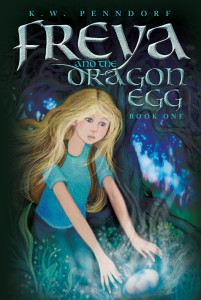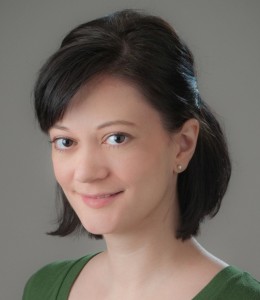“Getting Students to ‘Show, Don’t Tell’ Their Writing”
I love books that read like a ‘movie in my mind’ with words capable of producing visions and feelings and experiences; basically, a world in which I could step into. So when I learned good authors write what they like, I knew immediately FREYA AND THE DRAGON EGG should read like a movie in my readers’ minds.
Unfortunately just because I sat down to pen and paper didn’t mean that movie was coming to life. If anything, the words I was writing were flat, stale, boring, and matter-of-factly.
Luckily, I found an editor who explained my problem: the words in my book didn’t play out like a movie in my mind because they were written in a way that told and didn’t show. “Show, don’t tell,” she said. Again and again and again. Show, don’t tell. Show, don’t tell. Show, don’t tell.
But how? How do I go about converting what I had already written in ‘telling’ words to ‘showing’ words?
Simple: close your eyes.
And so I did and still do. I visualize the scene, the action, the interaction, the transitions, the lull points, the fast-paced points, you name it, I visualize it. Then I write it.
In speaking with teachers, students, and writers, I find the irony about learning how to show don’t tell is precisely that: show the lesson, don’t tell the lesson.
Step 1
I open my workshops and school visits be doing a sort of warm up activity. Using two paragraphs I found on Scholastic’s website (http://www.scholastic.com/teachers/article/show-dont-tell-whiteboard-writing-lesson) I ask everyone to decide which paragraph created a movie in their mind when they read it. It’s amazing how many are spot on. I let them know that their correct choice is an example of “showing” whereas the other paragraph depicts “telling.”
Step 2
I hand out a worksheet of several ‘telling’ sentences. The number of sentences is dependent upon age range of the audience and amount of time for the event/lesson. Typically I have 6-8 sentences for a 45 minute block of time. Example sentences can include: He sat; She opened the door; He coughed; The dog barked. Feel free to create your own sentences, yet keep in mind the sentences need to be pantomimed.
Step 3
I invite one student to come stand at the front of the room and I ask them to act out the sentence. So, for example, the student is assigned the sentence “He sat” in which he’s allowed no props nor allowed to make sounds or talk. I ask all remainder students to watch carefully, for when I count to three the actor will perform. He does. I then ask students to tell me what they saw. Perhaps one answers the boy pulled (an invisible) chair near to him before plopping his weight down, or the boy folded his legs as slowly lowered himself into the chair, or he collapsed upon the chair, or he used his hands to steady his descent. Whatever the response, it’s always interesting how many NEVER say “He sat.” For students who get hung up with the action of falling down into the chair, I will often prompt them to answer what they saw the boy do with his hands or his body or what his facial expression was.
Step 4
Once students have replied and responded to a few sentences as a whole group, I’ll have them watch the actor then write what they saw before discussing it. I always love hearing their new sentences probably because what they have learned in 45 minutes about “Show, Don’t Tell” took me years to learn! It’s really that simple.
Freya and the Dragon Egg
About the Book: Freya’s family is wonderful. Just not to her. After all, her older sister loves to talk about “pulling a Freya” – a term for any mistake she makes, her younger sister publicly reads from her diary without ever getting reprimanded, and her parents hardly take notice of her. But that is all about to change when her father, Denmark’s renowned Viking archeologist, asks her to hide a precious artifact where no one will find it. Freya jumps at the chance to prove her worth and suddenly discovers herself transported to a magical forest where she comes face to face with not only a thorpe of real Vikings but with a clan of sprites and a Berserk as well. In search of a way home, Freya unearths a realm of adventure and a path to greatness she is sure her family will revere.
Book Excerpt: “You must hurry. The police are due here any moment to question what I know about the break-in. If they search my office and find this…No! I don’t even want to think about that. It must be hidden. Do you understand?”
She nodded yes, though she didn’t understand at all.
“Yggdrasil is the link between the nine Realms. That Yggdrasil, outside my window there, it’s growing stronger because someone, or something, has tampered with the Realms. Could you imagine if the Realms were open in the modern day? If all the creatures, along with their powers, were unleashed…here?”
About the Author: Story time had always been KW Penndorf’s favorite ‘subject’ in school. But when her second grade teacher opted to read from a tattered old diary, KW’s view on books changed forever. Books were now alive, with adventures, dilemmas, far away locations, heroes, villains, drama, and quite frankly, story. Everything was so real, well at least in her imagination at any rate. She wanted to live in those stories… and she has.
In her senior year of high school KW interned at CBS three days a week, making sure to keep her grades up or the gig would be off. By sheer nature of the job, stories surrounded her there. In college, she spent a semester abroad living with her sister and brother-in-law in Denmark – where, yes, one can only imagine the crazy stories two sisters conjured up! Then after college, she moved to Germany and at the age of 25 she opened her own company – a language school, full of (you guessed it) stories abound. At 29 she moved back to the States, bringing home with her the greatest story and souvenir ever – her husband.
On a train ride into NYC, a vision came to KW’s sleepy commuter mind: a girl finding a dragon egg in the middle of a Viking graveyard. Presto! The premise for her debut novel was born. A story, which KW hopes, will change a child’s view on books forever.
Thank you to K.W. for this wonderfully insightful post!



